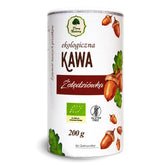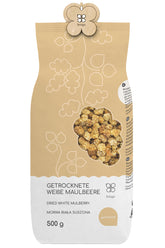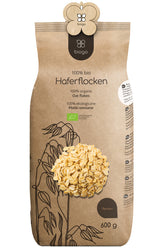Do you choose a “zero” or “light” product?
- Zero food
- "Light" - means less
- What will replace the “missing ingredients”?
- What about “zero” products?
- What and what is replaced with “light” products?
- paradox
- Summary
Lately, manufacturers have been outdoing each other with newer versions of their existing products. Some boast of having fewer calories or sugar, while others proudly claim to be eliminating bad fat, which they believe is the healthiest because it's the cause of all these diseases and excess weight. The answer to the question of what to choose isn't obvious, but to answer it, you need to understand what we mean by a "zero" and "light" product.
Zero food
Different manufacturers approach this nomenclature in two ways. However, most often, a product labeled "zero" contains a minimum amount of calories, which is actually close to zero. It can also mean that a particular product contains no sugar. If, for example, it's a sweetened beverage, its main source of energy, i.e., calories, is actually sugar. There's also a nutritional claim like "zero energy," which can be used for products with a maximum of 4 kcal per 100 ml . If the manufacturer doesn't add any sugar to its new, "zero" version, then such a product can actually contain almost no calories, which is in line with its name. Everything's fine here, so let's move on to "light" products.
"Light" - means less
"Light" translates from English as "light." The name itself suggests that it's more fit and contains fewer calories. Compared to the competition, these products usually don't have "zero" energy content, but rather reduced energy. For a product to receive this status, according to European Union standards, it must have at least 30% fewer calories than the original product. This applies to one of the ingredients, meaning it can have reduced energy, fat, or carbohydrate content. However, this rarely applies to protein, as it usually goes the other way. Manufacturers pride themselves on increasing the content of this macronutrient and dedicate it to people who care about their fitness, muscle mass, or lead an active lifestyle.
However, there is a certain relationship between these types of food or beverages. It has become common practice to define "zero" products as those without sugar, while "light" refers to those with reduced or no fat content. In both cases, the calorific value is significantly lower. Now let's ask another question: Should these carbohydrates and fats be replaced with something? The answer is yes.
What will replace the “missing ingredients”?
The separation of the two types of food also applies to the ingredients added to improve their quality, consistency, appearance, or simply taste. Every product contains certain amounts of proteins, fats, carbohydrates, and micronutrients such as vitamins and minerals. It's logical that the nutritional value and other properties will change if any of these are reduced or completely removed.
What about “zero” products?
They are often accused of being much more "chemical" than their classic counterparts. The situation isn't quite as clear-cut as it seems. The most well-known products of this type are, of course, sugar-free drinks. This is the largest group, so I'll devote a lot of attention to it. The substance that has been removed from them is sucrose, or sugar. It provided a sweet taste and a calorific value of 4 kcal per gram, so after deducting that, these drinks have almost zero kcal per 100 milliliters. In addition to sugar, there were various types of colorings, flavor enhancers, preservatives, and flavorings (all listed under the designation E). This composition varies depending on the type of drink. To achieve a taste similar to the original, the manufacturer filled the gap with all kinds of sweeteners and thickeners; otherwise, the drink would have a water-like consistency, yet still be a worthy successor to a fully-fledged, mature product.
Sweeteners are the ones that cause the most controversy. They are intended to act as an equivalent to sugar, and each tastes slightly different because of their varying levels of sweetness. They can be of natural origin (xylitol, stevia) or synthetic (acesulfame, saccharin, aspartame). Their greatest advantage is that, thanks to their very low glycemic index, they can be consumed by diabetics and are several to several hundred times sweeter than sugar, significantly reducing the amount needed to achieve the desired sweetness. In addition, they are low in calories and even have anti-cavity and antibacterial properties.
They are not recommended for people with phenylketonuria, irritable bowel syndrome, or pregnant women because they cross the placenta. They also have a laxative effect and stimulate the desire to eat sweet foods. This is due to the sweet taste. The brain perceives it through the sweet taste receptors and prepares for the portion of carbohydrates that will hit the stomach. This causes a rise in insulin levels, but with a lack of sugar intake, this leads to a drop in blood sugar levels, and consequently, our brain demands an additional portion of calories to increase these levels. The result is a state of increased appetite. It should be noted that everyone is susceptible to this effect to varying degrees, but it is worth noting that sweeteners and products containing them are not overdoing it. The final drawback is their price. We are not talking exclusively about drinks here, but about the desire to replace regular sugar with sweeteners. They are much more expensive and less available.
What and with what is “Light”
-products replaced?
The situation here is more complex. It depends on the product. To simplify this, let's focus on dairy products. Milk first. It is available in stores with different fat contents. I compare 3.5% milk with 0.5%.
The former contains 64 kcal per 100 grams, or 3.5 grams of fat, 3.3 grams of protein, and 4.8 grams of carbohydrates. In contrast, 0.5% milk contains 39 kcal per 100 grams, 0.5 grams of fat, 3.5 grams of protein, and 5.1 grams of carbohydrates, and significantly more water. The reduction in fat also impacts the taste. It carries the flavor, and the larger amount of water also affects its absorption on the tongue. We can also detect an increase in carbohydrates and protein compared to higher-fat milk.
Let's move on to yogurt. It's very difficult to maintain the product's proper structure by removing fats. Milk powder or milk proteins are added to some yogurts. In this case, of course, it's not harmful to health, provided you're not lactose intolerant or allergic to these ingredients.
The same applies to cheese. Naturally ripened cheeses, in particular, are high in fat, so it's not surprising that their "light" versions appeared. A few years after the products were introduced to the food market, scientific studies began, the results of which were intended, among other things, to serve as guidelines for producers. It turned out that a significant portion of consumers were concerned that the consistency was too rubbery, the taste bland, and the color unnatural. Various techniques were introduced to improve defatted products, and special substances were used to enhance the taste sensation. Fat mimetics, i.e., substitutes based on cellulose, maltodextrin, fiber, or modified starch, are popular. Their function is to bind water and form a gel, giving products a shape similar to those containing fat. It is immediately obvious that these are carbohydrates. In fact, many of these types of products have an increased amount of sugar compared to their originals. However, due to the fact that the amount of an ingredient has been reduced, they can be called “light” products.
paradox
The fundamental disadvantage of low-energy alternatives is that the word " light " only characterizes a specific group of products, which may be overshadowed by foods that are naturally low in calories , sugar-free, and low in fat. Fashion for fitness often leads consumers to reach for these products. This sometimes leads to a kind of paradox: products with this name are increasingly chosen over those that are naturally low in calories, such as vegetables or fruit. Often, a light bar or yogurt is more appealing than an apple or cucumber.
Summary
Following the motto "Everything in moderation for humans," "zero" and " light " products can be incorporated into the daily diet and even be an interesting way to discover new flavors. The key is moderation and reading labels carefully. Each manufacturer adds slightly different sweeteners or fillers, and it's very important to read the label, especially the ingredients, which can vary dramatically when choosing a new product.
THE PUBLISHER'S CHOICE
Almonds 1 kg BIOGO
- €11,69
€13,75- €11,69
- Unit price
- / per
Walnuts 800 g BIOGO
- €8,65
€10,18- €8,65
- Unit price
- / per
Dried organic mango 400 g BIOGO
- €10,99
- €10,99
- Unit price
- / per
Dried White Mulberries 500 g ORGANIC
- €5,84
€6,87- €5,84
- Unit price
- / per
Dried organic figs 800 g BIOGO
- €30,12
- €30,12
- Unit price
- / per
Unpeeled buckwheat groats 1 kg BIOGO
- €2,81
€3,31- €2,81
- Unit price
- / per
Organic coconut flakes 500 g BIOGO
- €10,07
- €10,07
- Unit price
- / per
Organic oat flakes 600 g BIOGO
- €3,77
- €3,77
- Unit price
- / per
Organic cashew nuts 1 kg BIOGO
- €19,99
- €19,99
- Unit price
- / per
Milk thistle seeds 1 kg BIOGO
- €3,99
- €3,99
- Unit price
- / per









































































































































